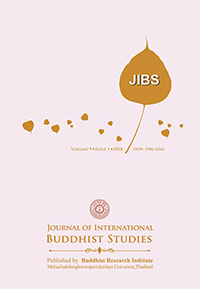The Three Cultural Lines of Buddhist, Christian and Islamic Communities in Phrapradaeng District, Samutprakarn Province: A Model of Peaceful Coexistence toward ASEAN Community
Keywords:
Culture, Buddhism, Christianity, Coexistence Prototype, Peace, ASEAN CommunityAbstract
The Phrapradaeng District is the smallest district of Samutprakarn province. For over the past centuries, it is composed of the different ethnic and religious groups of people. In this paper, the common identities of the three cultural lines of Buddhist, Christianity and Islamic communities were investigated and to strengthen the affection, unity, and preparedness entering the ASEAN Community. The qualitative research method was adopted, using field observation and focus group; observation and group interviews. The results demonstrated that the identities of all three religions and communities were different; the community-based religious principles have stipulated and promoted the behaviors of the people; namely, living in the way of righteousness, and social norms and cultures that are recognizable and known, loving fellowman, appreciation, forgiveness as religious teaching in the three communities. It’s suggested that the three cultural line networks of philosophers should be established and annual activities should be promoted actively.
References
Amara Pongsipich (2006) Cultural Diversity (Paradigms and Roles in Civil Society. 5th edition, Bangkok: Chulalongkorn University.
Herzberg, Frederick and others. (2002). The Motivation to work. New York: John Wiley and Sons.
Natthanai Prasannam (2007). Gender, Ethnics, and Identity Problems in “Touch of Pink” Film . Retrieved August 3, 2014 from:
http: // www.midnigthuniv.org
Preeda Phoolsin (2011). Research Project on Community Participation in Art and Cultural Knowledge Management: A Case Study of Wat Sommanas Community, Funded by the Department of Cultural Promotion, Ministry of Culture, Fiscal Year 2011
Pornusa Prasongwanna (2013). A Study of Multi-Religious Prototype Communities in Peaceful Living Peace, Wat Kalayan,
Thonburi, Bangkok , Master of Buddhist Studies, Department of Social Development ,Graduate School , Mahachulalongkornraja vidyalaya University
Rapiphan Muhamad (2013). Islam and Sustainable Development:A Case Study of the Masjid Malalulisla Community, Saen Sab Canal, Bangkok, Master of Science (Environmental
Management), Faculty of Social and Environmental Development National Institute of Development Administration
Sukhum Kitsa-nguan (Pastor, Abbot of the Sacred Heart of Mary Church, interview on October 5, 2014).
Warin Arame (2009). Remaining Ethnic Identity of Mon People
in West Raman Community, Lakeng Subdistrict,
Samut Songkhram Province, Faculty of Humanities, Silpakorn University.
Weber, Max. (1966). Theory of Social and Economic Organization (Handerson & Parson Trans) Handerson and Tallcott Parson, (4th Edition.). New York: The free Press.
White, L. (1949). The Science of Culture: A study of man and civilization.







